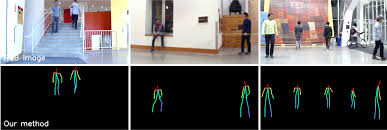
Breaking News
 Tuesday War Room LIVE: Trump Mentioned in ANOTHER Big Batch of Epstein Files...
Tuesday War Room LIVE: Trump Mentioned in ANOTHER Big Batch of Epstein Files...
 Trump Names Louisiana Gov. Jeff Landry Special Envoy to Greenland
Trump Names Louisiana Gov. Jeff Landry Special Envoy to Greenland
 The Box Office Crisis Is Worse Than It Looks
The Box Office Crisis Is Worse Than It Looks
 Will The CME Raid The Silver Party?
Will The CME Raid The Silver Party?
Top Tech News
 Travel gadget promises to dry and iron your clothes – totally hands-free
Travel gadget promises to dry and iron your clothes – totally hands-free
 Perfect Aircrete, Kitchen Ingredients.
Perfect Aircrete, Kitchen Ingredients.
 Futuristic pixel-raising display lets you feel what's onscreen
Futuristic pixel-raising display lets you feel what's onscreen
 Cutting-Edge Facility Generates Pure Water and Hydrogen Fuel from Seawater for Mere Pennies
Cutting-Edge Facility Generates Pure Water and Hydrogen Fuel from Seawater for Mere Pennies
 This tiny dev board is packed with features for ambitious makers
This tiny dev board is packed with features for ambitious makers
 Scientists Discover Gel to Regrow Tooth Enamel
Scientists Discover Gel to Regrow Tooth Enamel
 Vitamin C and Dandelion Root Killing Cancer Cells -- as Former CDC Director Calls for COVID-19...
Vitamin C and Dandelion Root Killing Cancer Cells -- as Former CDC Director Calls for COVID-19...
 Galactic Brain: US firm plans space-based data centers, power grid to challenge China
Galactic Brain: US firm plans space-based data centers, power grid to challenge China
 A microbial cleanup for glyphosate just earned a patent. Here's why that matters
A microbial cleanup for glyphosate just earned a patent. Here's why that matters
 Japan Breaks Internet Speed Record with 5 Million Times Faster Data Transfer
Japan Breaks Internet Speed Record with 5 Million Times Faster Data Transfer
Smart technology sees through walls to track and identify people

A group of researchers and students at MIT have developed an intelligent radar-like technology that makes it possible to see through walls to track people as they move around, a development that could prove useful for monitoring the elderly or sick as well as for other applications — but that also raises privacy concerns.
Tests show that the technology, known as RF-Pose, can reveal whether someone is walking, sitting, standing or even waving — and can identify individuals from a known group with a success rate of 83 percent. Its developers say it could prove useful for law enforcement, search and rescue, and — perhaps most important — health care.
"We've seen that monitoring patients' walking speed and ability to do basic activities on their own gives health care providers a window into their lives that they didn't have before, which could be meaningful for a whole range of diseases," Dina Katabi, a computer scientist at MIT and leader of the group, said in a statement.
She and her colleagues presented new research about the technology last month at a computer vision conference in Salt Lake City.



